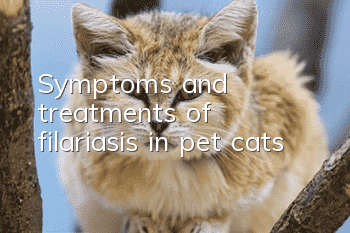Symptoms and treatments of filariasis in pet cats

Filariasis in cats is usually caused by infection through mosquito bites. Cats with filariasis will have heart palpitations and difficulty breathing. In severe cases, edema and ascites may appear under the skin. For cats that die from this disease, cardiac hypertrophy and hepatomegaly can be seen at post-mortem examination.
Clinical symptoms in the acute phase include lymphangitis, lymphadenitis, and erysipelas-like dermatitis. Lymphangitis is characterized by retrograde disease. During the attack, a red line under the skin can be seen developing centrifugally, commonly known as "flowing fire" or "red line". It can occur in all limbs, but is more common in the hind limbs. When the inflammation spreads to the superficial micro-lymphatic vessels of the skin, diffuse redness and swelling appear on the local skin, with a shiny surface, tenderness and burning sensation, which is erysipelas-like dermatitis. The lesions are more common in the middle and lower legs.
In Filaria bancrofti, if the adult worms parasitize in the lymphatic vessels in the scrotum, it can cause spermatic corditis, epididymitis or orchitis. Along with local symptoms, affected cats are often accompanied by chills, fever, headache, joint pain, etc., which is called filarial fever. Some affected cats may only have cold and heat without local symptoms, which may be symptoms of deep lymphangitis and lymphadenitis.
If you want to treat this disease, you must first eliminate the intermediate hosts, fleas and mosquitoes, cut off the routes of transmission, and eliminate mosquito breeding areas. These are very important measures to prevent the disease. For cats that have been infected, levodamide can be taken orally at a dose of 10 mg per kilogram of body weight.
- What are the taboos in cat diet?
- How long does it take for a cat to undergo external deworming after taking a bath?
- Why do cats like to hold hands?
- How to wean a kitten?
- Can cats suffer from depression? What are the symptoms of depression in cats?
- What should I do if my cat wets the bed?
- How should cats be trained? Let’s learn some tips on training cats!
- Do you know what the different meows of cats mean?
- Are cats color blind? What are cats color blind?
- What should I do if my cat is picky about food? Changing the cat’s eating habits is inevitable



